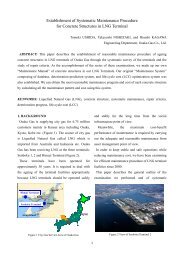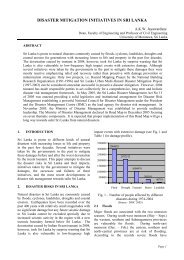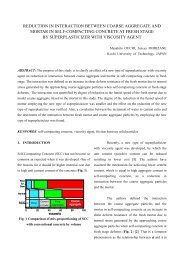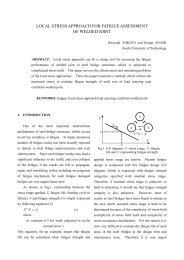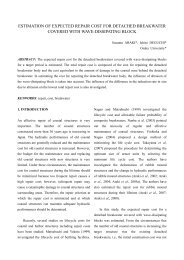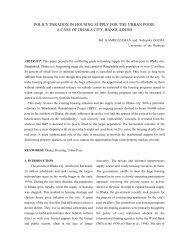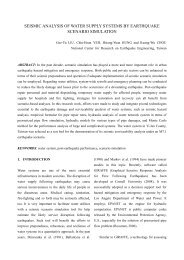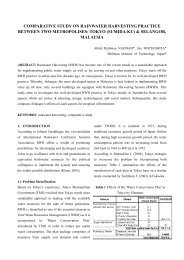DEVELOPMENT OF FLY ASH USAGE IN THAILAND
DEVELOPMENT OF FLY ASH USAGE IN THAILAND
DEVELOPMENT OF FLY ASH USAGE IN THAILAND
Create successful ePaper yourself
Turn your PDF publications into a flip-book with our unique Google optimized e-Paper software.
2.2 Properties of Paste, Mortars and Concrete<br />
using Fly Ash<br />
2.2.1 Water Requirement<br />
Table 3 shows the comparison of water<br />
requirement between the Thai fly ashes and the<br />
Japanese fly ashes. It should be noted here that<br />
the test methods of both countries are not the same<br />
(JIS A6201-1991 was used to test the Japanese fly<br />
ashes and ASTM C311 was used to test the Thai<br />
fly ash). Mix proportion of the test samples,<br />
apparatus and the test procedure are all different.<br />
Especially for the mix proportion, in JIS<br />
A6201-1991, the water to binder ratio of the<br />
control sample (cement only mortar) is set at 0.65<br />
and the sand to binder ratio is 2.0 while ASTM<br />
C311 specifies water to binder ratio of 0.484 and<br />
sand to binder ratio of 2.75. However, though<br />
both countries’ fly ashes were tested based on<br />
different standards but they have the same concept<br />
to evaluate the test results. If the two set of data<br />
are compared by discarding the difference of the<br />
test methods, then both countries’ fly ashes have<br />
similar water requirement as can be seen from<br />
Table 3. The lower loss on ignition makes the<br />
Thai fly ashes have similar level of water<br />
requirement to the Japanese fly ashes though they<br />
are coarser.<br />
Table 3 Comparison of Water Requirement between Fly Ashes in Japan and Thailand<br />
Properties Japan* (%) Thailand** (%)<br />
Water requirement (%of<br />
the control)<br />
91-105 (majority



